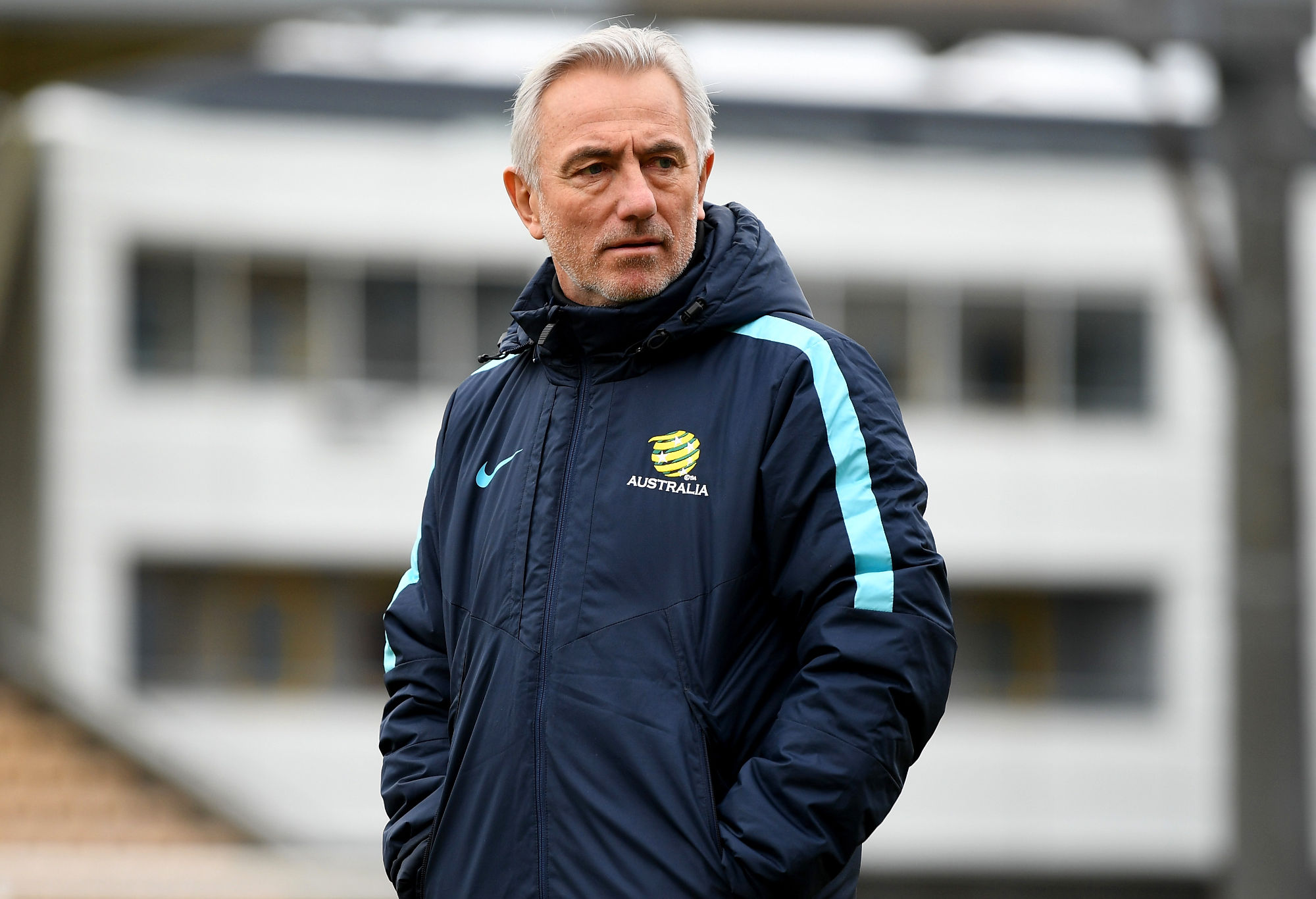Australia’s World Cup was defined by good organisation in the middle third, and a lack of quality in both penalty boxes.
The key feature of Bert van Marwijk’s short tenure was the change in defensive system. Whereas Ange Postecoglou preferred high pressing, Van Marwijk implemented a midfield defensive block.
The side dropped back into a compact 4-4-2, protected the space between the lines and allowed teams to build up from inside their own half.
This was less about winning the ball back, more about stopping the opposition from creating high quality chances.
This type of defensive strategy has been very common at this World Cup – a modern, ‘European’ system. Van Marwijk deserves credit for how quickly he was able to organise the Socceroos into an approach very different from his predecessor.
On the whole, too, against France, Denmark and Peru, Australia were rarely opened up. It was difficult to find space between the lines, with Aaron Mooy and Mile Jedinak excellent at screening the zone in front of the centre-backs.
France, in particular, struggled for ideas. They moved the ball patiently in front of the block, but could not play through it.
The issue were the moments – few and far between, but still there – were teams could quickly play in behind the last line, particularly when the back four was caught higher up the pitch.
In the moment of transition, the Socceroos tried to get organised behind the ball quickly rather than put pressure on the ball. A quick early pass in behind, therefore, could cause problems.
Antoine Griezmann’s penalty is a good example of this, as is the initial ball in behind Trent Sainsbury in the build-up to Andre Carillo’s splendid volleyed goal.
The only way teams could really exploit the Socceroos was to get into the penalty box before the block was set.
Going forward, Australia had a surprising amount of possession against both Denmark and Peru. They were able to control the game with slow, patient build up, moving the ball from one side to the other to find a free man between the lines.
Van Marwijk believes they were able to do this successfully against Peru. “Every time we could build up and found our free man in the midfield,” said the outgoing coach, “so that was the main reason we could control the game for big parts.”
The free man against Peru was often Tom Rogic, who moved from his central 10 role to a position on the outside of Peru’s two defensive midfielders, where he could receive penetrating passes from Trent Sainsbury to turn and dribble at the back four.
This was Rogic’s best game of the tournament – he created two good opportunities by turning in between the lines then switching to an overlapping full-back, as well as memorably jinxing past four defenders before firing a low shot straight at the goalkeeper.
That, of course, was the most obvious weakness for Australia – finishing attacking moves. If it was not Rogic, it was Matthew Leckie or Robbie Kruse moving into narrow positions from the wing to receive similar passes in the build-up from Sainsbury and Milligan, with space created on the outside for an overlapping full-back.
Aziz Behich and Josh Risdon got forward on many occasions and delivered balls into the box, but Australia struggled to overload or get a free player in the penalty box to finish the move.
It was all neat, tidy passing football, but with no cutting edge. Bert van Marwijk put it succinctly – “everyone saw how we performed and played and we got a lot of compliments.”
“But you don’t win game with compliments, only goals and with that we had a problem.”

(Photo by Michael Regan/Getty Images)
Therefore, Australia failed to progress despite three solid, but not decisive, performances. If assessing the World Cup purely on the results in the three group games, a lack of individual quality in either penalty box was the decisive factor, particularly upfront.
On a more broader scale, of course, questions have to be asked of the long-term tactical direction of the side and the identity the Socceroos should represent.
Viewed in isolation, this tournament was sound: the Socceroos were well organised, competed excellently and were let down in areas of already known weaknesses.
Viewed in context, there needs to be greater clarity about how we can improve our player development to address these individual shortcomings, as well as a national direction on both the tactical strategy and the mindset required that can help turn valiant performances into victories.






























































































